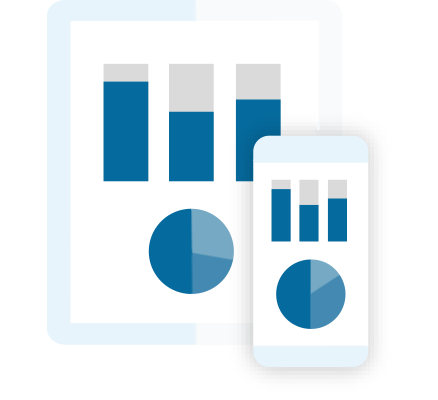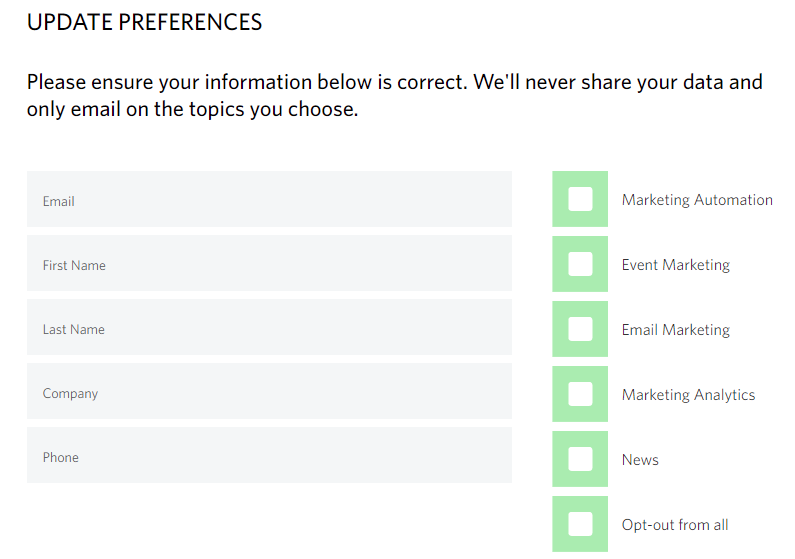Financial institutions are a core pillar of society. But that doesn’t mean that they are immune to the changes that the digital era brings with it. And one of the biggest macro-shifts digitalization brings with it? Personalization. Which makes sense if you think about it. Because it captures what modern consumers want: individual service and attention. Yet many financial institutions are struggling to embrace this trend due to their size, siloed departments and data sources, government regulations, and strict privacy laws. But as consumer demand for individualized experiences grows, it’s imperative that companies offering financial services embrace modern website personalization strategies. And when we say personalization, we don’t just mean customizing your emails, we’re referring to tailoring your entire website experience to your customer's wants and needs. We realize this is easier said than done. But doing so pays off. Financial companies that achieve personalization at a scale can minimize operational inefficiencies. Meaning their marketing budgets and efforts are optimized and pack more of a punch because they know where their customers are and what content attracts them. So let's look at the steps you can take to enable website personalization and make your financial services shine.
- Solutions
-
-
-
- AGENCY SERVICES
-
-
-
- Resources
-
-
- Thought Leadership
- Insights
Expert insights, best practices, and trends in financial marketing
- Reports & White Papers
Industry research and benchmarks to stay ahead of the competition
- Best Practices
Actionable playbooks for mastering digital
- Insights
-
- Product and Learning
- Learning Site
Step-by-step guides and video tutorials on using StoneShot
- Product Demos
See our platform in action and explore key features
- ChatGPT in StoneShot
Al-powered insights and recommendations for smarter marketing
- Learning Site
-
- Corporate
- Case Studies
See how leading financial brands achieve marketing success
- Press Releases
The latest announcements and company milestones
- Events
Live and on-demand sessions to sharpen your marketing skills
- Case Studies
-
-
- Pricing
- About
-

Sign Up
Thanks for signing up!
We're excited to share our content with you, and as an email subscriber you'll see our blogs and news ahead of the pack.
Want to catch up while you're waiting the fresh content?
Thanks for Updating
We're excited to share our content with you, and as an email subscriber you'll see our blogs and news ahead of the pack.
Want to catch up while you're waiting the fresh content?
March 31, 2022 |4 min read |Email Marketing
How to Give Your Clients a Personalized Website Experience
Share

- Highly responsive client support
- Flexibility and customization
- Strong client relationships
Related Articles
- Full Platform Access for 30 Days
- Send Emails Without Limits
- Effortless Event Marketing
Trusted by leading financial services
Privacy Overview
| Cookie | Duration | Description |
|---|---|---|
| _GRECAPTCHA | 6 months | This cookie is set by the Google recaptcha service to identify bots to protect the website against malicious spam attacks. |
| cookielawinfo-checkbox-advertisement | 1 year | Set by the GDPR Cookie Consent plugin, this cookie is used to record the user consent for the cookies in the "Advertisement" category . |
| cookielawinfo-checkbox-analytics | 11 months | This cookie is set by GDPR Cookie Consent plugin. The cookie is used to store the user consent for the cookies in the category "Analytics". |
| cookielawinfo-checkbox-functional | 11 months | The cookie is set by GDPR cookie consent to record the user consent for the cookies in the category "Functional". |
| cookielawinfo-checkbox-necessary | 11 months | This cookie is set by GDPR Cookie Consent plugin. The cookies is used to store the user consent for the cookies in the category "Necessary". |
| cookielawinfo-checkbox-others | 1 year | This cookie is set by GDPR Cookie Consent plugin. The cookie is used to store the user consent for the cookies in the category "Other. |
| cookielawinfo-checkbox-performance | 11 months | This cookie is set by GDPR Cookie Consent plugin. The cookie is used to store the user consent for the cookies in the category "Performance". |
| stoneshot-memberurlid | 1 year | This cookie is set by StoneShot to identify the user as new or repeat visitor. |
| viewed_cookie_policy | 11 months | The cookie is set by the GDPR Cookie Consent plugin and is used to store whether or not user has consented to the use of cookies. It does not store any personal data. |
| Cookie | Duration | Description |
|---|---|---|
| Wistia | 1 hour | Wistia sets this cookie to collect data on visitor interaction with the website's video-content, to make the website's video-content more relevant for the visitor. |





